Atomic Cartoons Lego Marvel Avengers
Atomic Cartoons approached us for their Lego Marvel Avengers project: the goal was to take their existing final renders and recreate them to an artistic style. Atomic completed the shots in their Physically Based Rendering (PBR) Lego style and wanted us to match their artwork more closely and move away from the standard Computer Graphics (CG) look.
Intro Trailer (video link)
For this project, using our renderer agnostic workflow was ideal since the passes were already rendered: we developed these tools exclusively within the Foundry Nuke compositing software to work with existing rendered data. It consists of various applications of Cell Shading, Linework, Illustrative Hatching, and a variety of Painterly options.
The restrictions and goals given by Atomic Cartoons were an excellent opportunity to show the power of a compositing workflow with our custom tool set:
• Take the existing CG shots and apply Stylized NPR treatments based on 3d data
• Do all treatments with our Nuke compositing custom tools
• Hit desired artwork for look
• Match the desired artwork for the look
• Apply the artwork to already rendered animation sequences
• Limit the compositing tree for clarity
• Go beyond the artwork with the painterly and hatching tools
When working with these kinds of projects, it is a pleasure to have a clear direction. In this case, we had the artwork from the Lego Jurassic World project we did a couple of months earlier. Transferring this artwork to an existing data set of already rendered images was the real challenge.
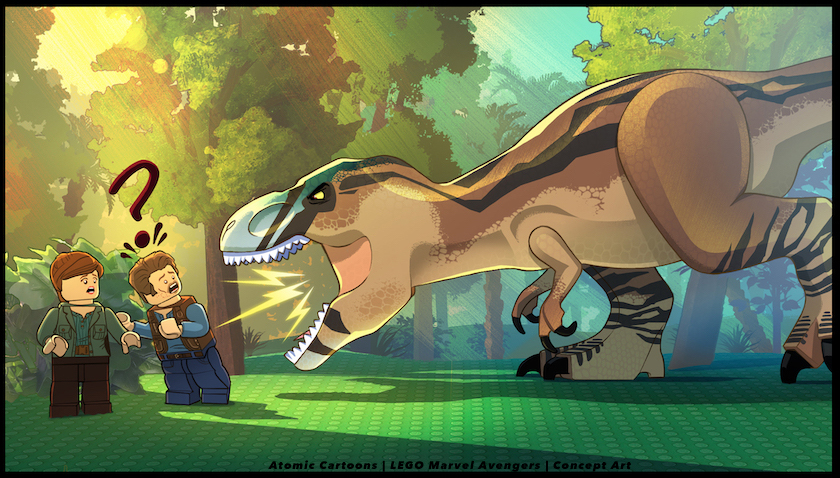
Compare: Original render vs Art goal on animated sequence (video link)
Compare: Original render vs Art goal on animated sequence (video link)
Compare: Original render vs Paintery + Line Experiments on focus regions (video link)
Instead of the typical CG Depth of Field (DOF) getting blurrier in the distance and extreme foreground like we see on every project, the goal was to design a Level of Style, where there are deliberate style designs at each level.
Typically, clients like it based on camera distance to mimick DOF in a different way, and it works great for that. It does get more interesting as well when applying the different levels of style to things like light & shadow areas, or even story driven: for example a certain character could be a "level 3" with simplified shapes and brush strokes, even when they are at full frame in the camera, where the other characters have "level 1".
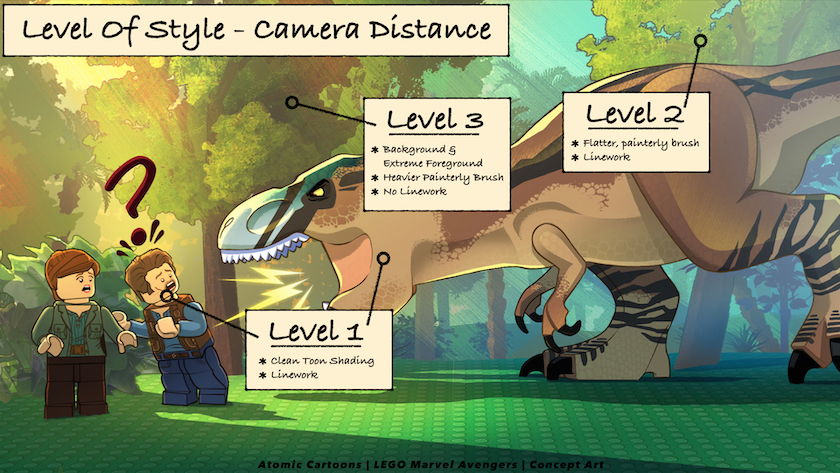
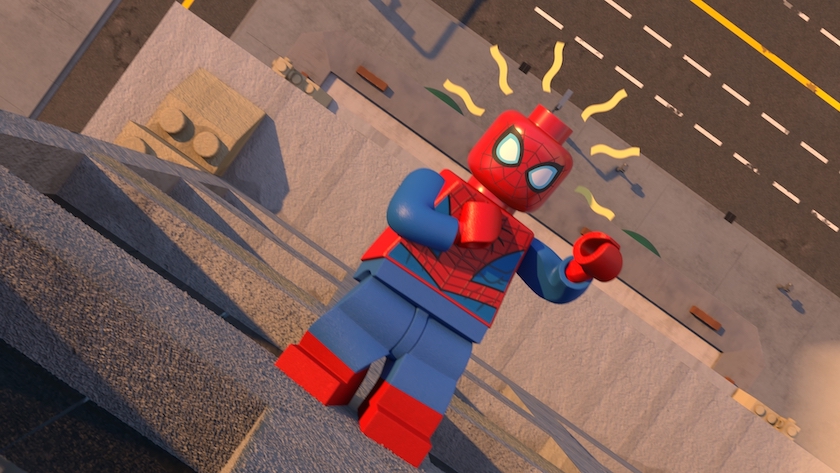
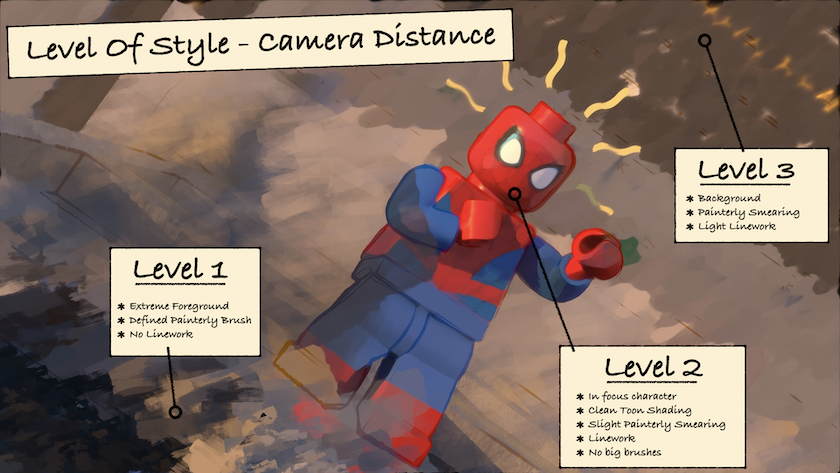
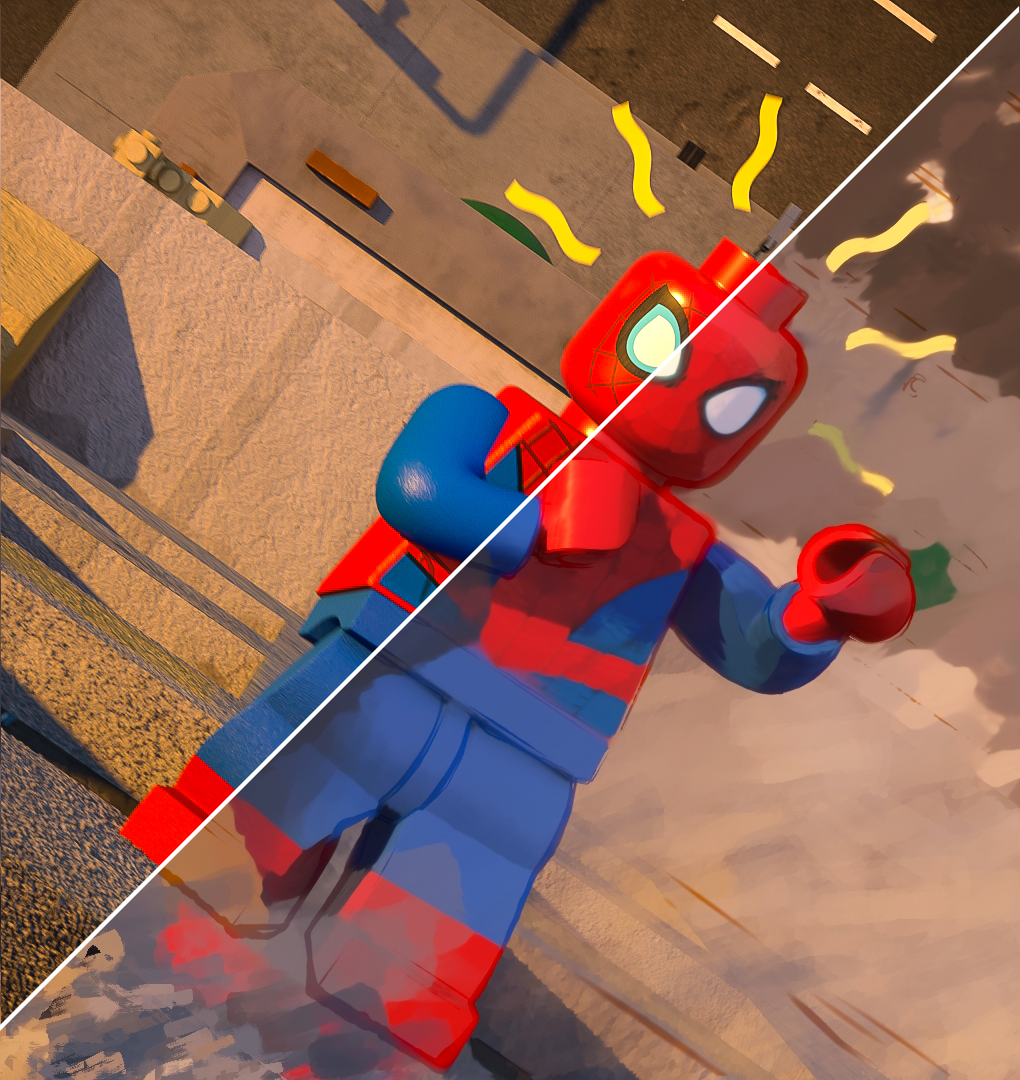
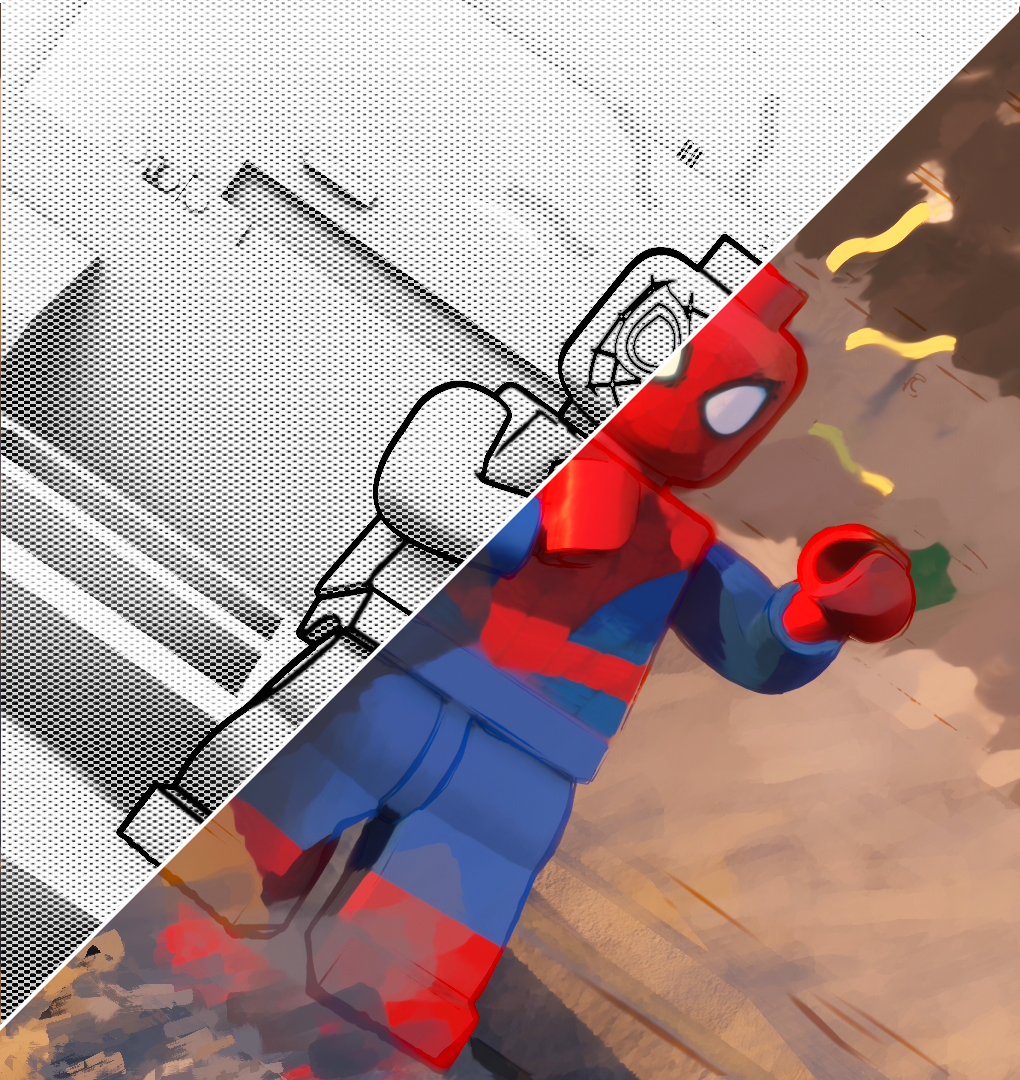
The tools we developed in the Foundry Nuke compositing software work well with existing rendered 3D data. During the production, when the correct data is added during the PBR render passes, the style possibilities are very flexible and fast due to GPU support. And they keep this flexibility until the very end of production.
Ernst Janssen Groesbeek - Look Deveopment
Christos Obretenov - Shader Development
Special Thanks
Tim Llewellyn
Steve Grover
If you're interested in this technology we'd love to hear from you! We're currently custom developing it out for clients on their projects and are open to working with studios in customizing it for their unique non photoreal looks all in 3d. For more info read our new FAQ.
|
© 2019- Lollipop Shaders, a division of Lumnance Software Inc. Contact us: info@lollipopshaders.com Office: Suite 302C - 1551 Johnston Street, Granville Island, Vancouver, BC, Canada, V6H 3R9 |
|
renderman shaders lego NPR toon drawing render 3d plugin
